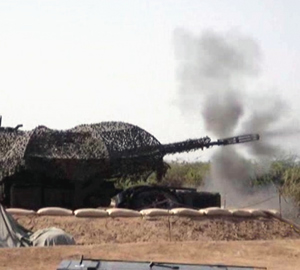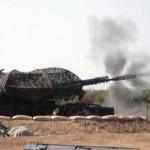

In a step further deteriorating relations between Pakistan and NATO, Islamabad announced today its air defense forces will shoot down any aircraft, manned or unmanned, penetrating its borders. Pakistan’s tougher stand regarding foreign operations within its airspace has changed dramatically after U.S. helicopters fired at Pakistani troops along the border with Afghanistan November 26, 2011, killing 24 soldiers. “Any object entering into our airspace, including US drones, will be treated as hostile and be shot down,” a senior unnamed Pakistani military official was quoted as saying by NBC News. Following the incident Pakistan has shut down all NATO supply routes crossing its borders and directed the U.S. to leave the Shamsi airfield in Balochistan operated by the CIA in support of drone attacks in the area. All US have left the base by Saturday December 10, Pakistani sources confirmed.
Following the air strike, army chief Gen Ashfaq Parvez Kayani issued a communique that gave troops in the field full liberty to respond to any future attacks without consulting their superiors. Kayani issued multiple directives since the November 26 attack, including orders to shoot down US drones, senior military officials said.
US sources confirmed that drones have performed over 300 attacks inside Pakistan in recent years, in pursuit of Al Qaeda and Taliban supporters. Pakistani air defense units have deployed along the Afghan border and upgraded their alert. These attacks culminated in 2011, with the attack on Osama Bin Laden hiding place in Abbottabad Pakistan that followed by an extensive campaign against suspected terror supporters and operatives in Pakistan north-west frontier – Waziristan.
The Pakistani Air Force maintains mixed assets of air defense from European and Chinese origin. AMong these are Chinese HQ-9 and HQ-2 (Chinese versions, roughly equivalents to S-300 and SA-2 ), Medium and short range missiles include the Crotale and Spada 2000. These air defense systems are normally deployed in defense of strategic sites like air bases, military ports and nuclear facilities. These sites are normally protected by air defense artillery, including Oerlikon GDF-005 35mm twin-cannons (partly enhanced with AHEAD systems) and Bofors 40mm guns.
Very Short Range Air defense (VSHORAD) assets are presumably the systems newly deployed in the Afghan border area, include various types of locally built SA-7 derivatives called Anza and French Mistral, both covering ranges up to six kilometers, as well as the U.S. Stinger and Swedish RBS-70 laser-beam-riding missiles effective at up to 8 km range. Given the autonomous nature of these systems, small teams operating the missiles can be deployed with many units throughout the area, to rapidly fill the perceived air defense capability gap.
While the US have faced VSHORAD missile threats by missiles obtained by Afghanistan’s Taliban, given early warning and potential threat of more sophisticated sensors and other air defense assets, including the Erieye Airborne Early Warning systems, JF-7 and F-16 air defense fighters, turning the airspace over Waziristan and Southern Afghanistan into a ‘contested access’ airspace for aircraft, helicopters and UAVs.
















